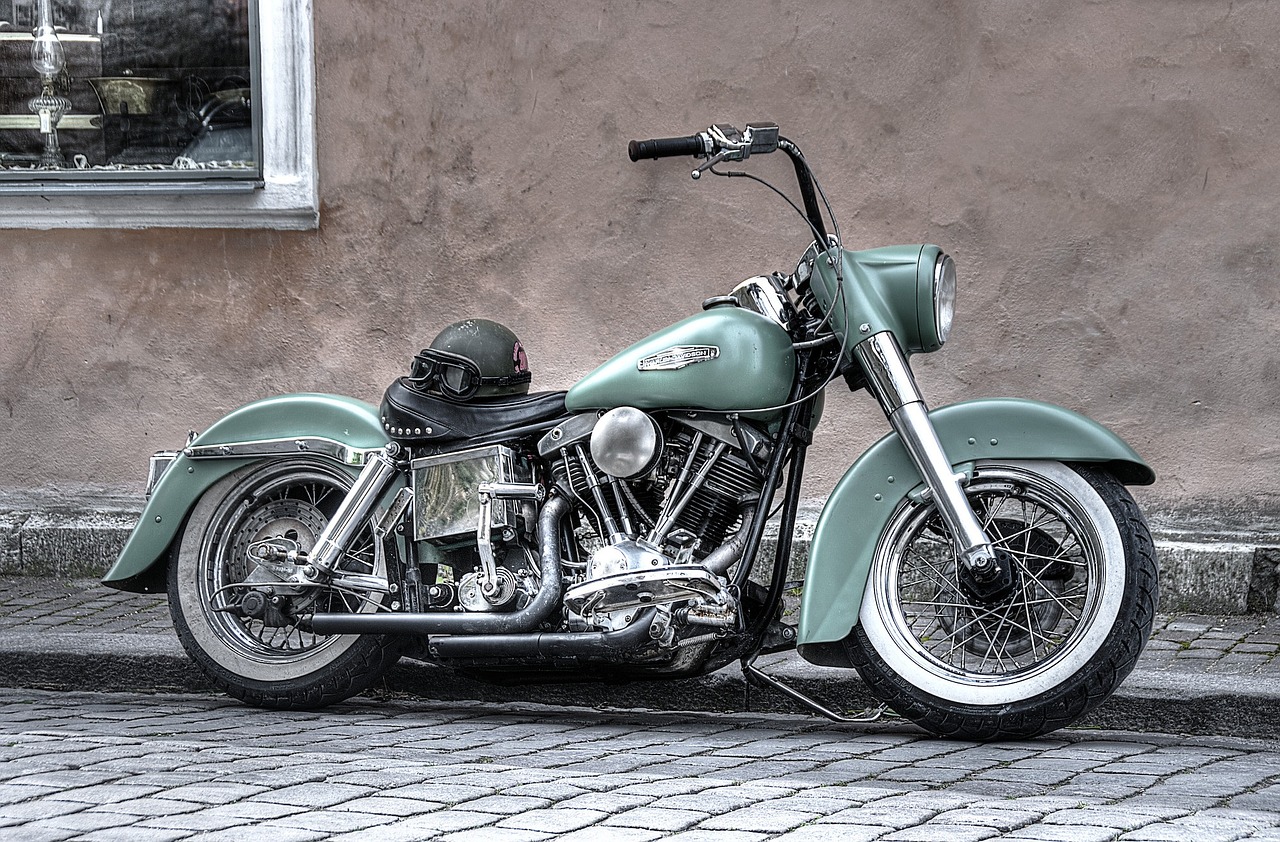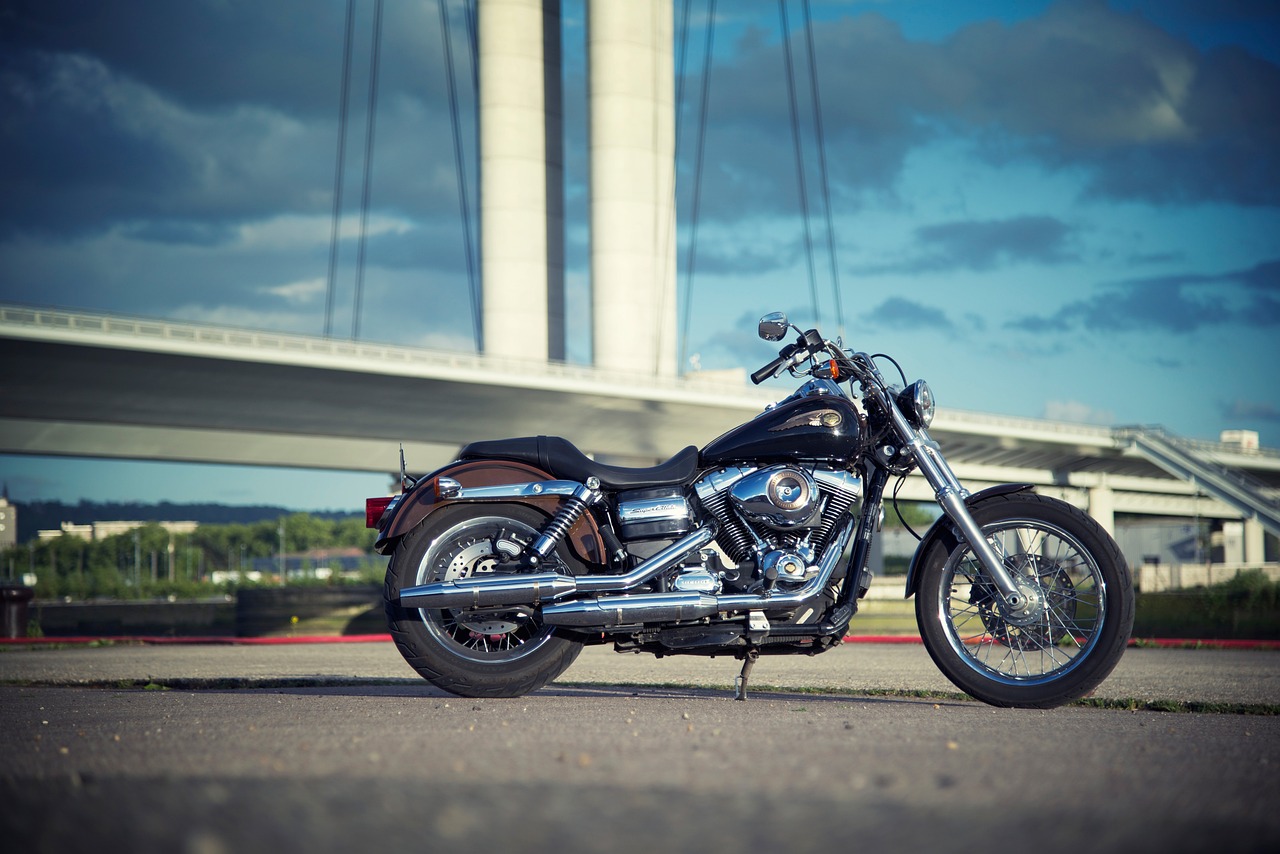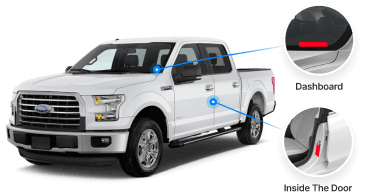Locating the VIN on a Harley-Davidson Motorcycle
The Vehicle Identification Number (VIN) on Harley Davidson motorcycles is a unique code that serves as a bike's fingerprint. Typically found on the frame neck, where the fork meets the frame, or on the vehicle's documents, the VIN is crucial for identification and registration. For models with the VIN on the frame, it may require turning the handlebars or moving the bike to a well-lit area to see it. This VIN not only distinguishes individual bikes but also links all the bikes of the same model together, providing a historical thread back to previous models. Each set of VIN codes contains specific information about the bike, including its manufacture year, model specifics, and production details. By understanding these codes, Harley Davidson enthusiasts and owners can gain deeper insight into their motorcycle's heritage and ensure they have the correct information for everything from ordering parts to discussing repairs. With this detailed guide from EpicVIN, you will learn everything you need to know about your Harley-Davidson motorcycle.
Vintage Harley-Davidson VIN Numbers & Locations

Vintage Harley-Davidson models, revered for their classic appeal, have VINs in various locations, often dictated by the era and model. These early VINs, while less standardized than modern, offer insight into the bike's origin, model code, and production number. Collectors often seek these numbers for authentication and valuation. The Harley VIN number on these older models is a window into the motorcycle's past, revealing the unique characteristics of each individual motorcycle. Unlike the full VIN system that the Department of Transportation developed later, these early VINs varied greatly, adding to the mystique and allure of vintage Harley Davidson bikes. Each VIN is a historical record, tracing back to when the bike first left the factory, providing a tangible link to the motorcycle's original state and lineage.
More on the VINs locations of vintage motorcycles:
- Vintage Harley-Davidson VINs are often located on the engine case, but this can vary based on the model and year.
- On some models, the VIN can be found on the frame, typically near the front fork or under the seat.
- The location of the VIN might differ between models like Knuckleheads, Panheads, Shovelheads, and others, due to design changes over the years.
- It's common for VINs on vintage models to be stamped directly onto the metal of the bike, making them prone to wear or damage.
- In many cases, especially for very old models, the VIN might only be present on the engine and not on the frame.
- The absence of a standardized location for VINs in vintage models requires careful inspection of the entire motorcycle for identification.
Harley-Davidson Anti-Theft Codes
Harley-Davidson incorporates anti-theft features into their VINs. Understanding these codes can help in verifying the authenticity of a bike and detecting invalid VINs, which is especially useful when reading a vehicle history report. The check digit is a single character in the VIN that validates the number through a mathematical formula developed by the Department of Transportation. This digit is a critical part of the VIN code, ensuring that the sequence is not unique but also legitimate. Additionally, each part of the full VIN, including model designations and manufacturer information, is carefully encoded to prevent tampering and counterfeiting. This system acts as a safeguard, ensuring that each Harley-Davidson motorcycle can be accurately identified and traced, thereby enhancing security measures against theft and fraud. It's a comprehensive approach, turning the VIN into an essential tool for both owners and law enforcement in maintaining the integrity and ownership of these iconic bikes.
Harley-Davidson VIN Numbers Before 1970
Before 1970, Harley VIN numbers were less standardized, often featuring a combination of letters and numbers that indicated the model, engine type, and production year. These early VINs are key to uncovering the history of vintage Harleys. They provide a unique glimpse into the manufacturing practices and design trends of the era. Each character in these VINs holds specific information, from the plant where the bike was assembled to the specifics of the engine configuration. For enthusiasts and restorers, deciphering these VINs is like piecing together a puzzle, revealing the story behind each individual motorcycle. This era's VINs reflect a time before global standardization, highlighting the distinct character and craftsmanship of early Harley Davidson models. Understanding these VINs is essential for accurate restoration and preservation, ensuring the legacy of these classic bikes is maintained.
Letters Used Before 1970 in Model Designations
| Letter | Common Designations |
| A | Army or No Tow Bar |
| C | Commercial or Canadian |
| D | Increased Displacement or Increased Performance |
| E | Electric Start or Traffic Combination |
| H | Increased Displacement or Increased Performance |
| L | High Compression |
| R | Factory Racer |
Harley-Davidson VIN Numbers from 1970-1980
From 1970 to 1980, Harley-Davidson began a more systematic approach to VINs. These numbers included the world manufacturer ID, model designation, engine code, and production number. Understanding these codes is crucial for enthusiasts looking to restore or collect bikes from this era. During this period, the VINs started reflecting the production date and introduction date of the models more accurately. Engine numbers became more standardized, allowing for easier identification and matching of parts. This era also saw a trend where the engine and frame VINs started becoming matching VIN numbers, which facilitated the verification of the motorcycle's originality. This practice greatly helped in determining if a bike retained its original engine or if it had been replaced or modified over the years.
Harley-Davidson Engine Types
| Engine Type | Description | Years of Production |
| Flathead | Simple, reliable, low-compression engine | 1929-1973 |
| Knucklehead | Overhead valve engine, iconic design | 1936-1947 |
| Panhead | Improved OHV engine, aluminum heads | 1948-1965 |
| Shovelhead | More power and displacement | 1966-1984 |
| Evolution | Modern, reliable, oil-tight engine | 1984-1999 |
| Twin Cam | Increased power and torque | 1999-2017 |
| Milwaukee-Eight | More efficient, cooler, and smoother | 2017-Present |
1981 - 2000 Harley-Davidson 17 Digit VIN Numbers

In 1981, Harley-Davidson adopted the 17-digit VIN system, aligning with international standards. This system includes the world manufacturer identifier, vehicle type, engine code, and production year, providing a more detailed breakdown of the motorcycle's specifications. The inclusion of engine codes became a significant feature, offering precise information about the engine's specifications and capabilities. Moreover, this period marked a more sophisticated approach to noting the year or special introduction of models. Notably, the VIN system began to account for both the engine and chassis numbers, ensuring that each component was properly documented. This change allowed for a clearer understanding of whether the engine number matched the rest of the motorcycle, aiding in the verification of the bike's originality and integrity. These enhancements in the VIN system during this period greatly improved the ability to track, maintain, and authenticate Harley-Davidson bikes.
1981 and up World Manufacturer IDs
| World Manufacturer ID | Definition |
| 1HD | Manufactured for sale within the United States |
| 5HD | Manufactured for sale outside of the United States |
| 932 | Manufactured in and for sale only in Brazil |
| MEG | Manufactured in and for sale only in India |
2001-2009 Harley-Davidson 17 Digit VIN Numbers
During this period, the VIN structure remained consistent with the post-1981 system. The eighth digit often indicated the engine type, including whether the bike was fuel-injected. This era also saw the introduction of twin-cam engines, reflected in the VINs. The advancement in engine technology, such as the fuel-injected counterbalanced engines, was systematically encoded into the VINs. This period's VINs were crucial in identifying the presence of these advanced engine features. Additionally, the concept of a matching VIN number gained prominence, ensuring the engine and chassis numbers corresponded for authenticity. The location of the VIN also appears varies across models, sometimes found on different parts of the frame for different Harley-Davidson models. These changes in VIN placement and content reflected the brand's evolution and adaptation to new technologies and customer needs
Harley-Davidson VIN Numbers from 2010-2018
VINs from 2010 to 2018 continued the trend of detailed identification. The check digit and model year code were key components in these VINs, ensuring the authenticity and accurate representation of each bike. During this introduction period, Harley-Davidson further refined its VIN system to encapsulate more specific information. The production numbers, which are part of the latter section of the VIN, became a crucial aspect for identifying the exact unit in a model's production run. Furthermore, the first digit in the VIN started to play a significant role in identifying the country of manufacture, adding another layer of detail. For enthusiasts and owners, a VIN decoder became an invaluable tool during this period, allowing them to extract and understand the wealth of information encoded in the VIN. This enhanced decoding capability provided greater transparency and insight into the bike's origin, production specifics, and features
Harley-Davidson VIN Numbers from 2019 - Present

The latest Harley-Davidson models maintain the 17-digit VIN system with updated codes reflecting the latest models and technology, including advancements in fuel injection systems. In this current era, the VIN structure has evolved to include the weight class ID and model year, which are crucial for identifying the bike’s specifications and compliance with regulations. The model codes have become more detailed, reflecting the diverse range of Harley-Davidson bikes available. The weight class of each bike is now efficiently encoded, typically represented in the fourth digit of the VIN. This era also sees an emphasis on mid-year or special editions, with unique identifiers within the VIN to distinguish these from standard models. The presence of fuel-injected engines is now a standard feature, indicated within the VIN for clarity. Additionally, the assembly plant where the motorcycle was manufactured is encoded, providing a complete picture of the bike's origin and production journey. These enhancements in the VIN system offer a comprehensive understanding of each motorcycle, ensuring that owners and enthusiasts have access to all necessary information about their bikes.
Harley-Davidson VIN System: 2019 - Present Breakdown
| Character(s) in VIN | Significance |
| 1st - 3rd | World Manufacturer Identifier |
| 4th | Model Category/Weight Class |
| 5th - 7th | Specific Model Code |
| 8th | Engine Type (e.g., Fuel Injected) |
| 9th | Check Digit |
| 10th | Model Year |
| 11th | Assembly Plant |
| 12th - 17th | Production Sequence Number |
| Special Characters | Mid-Year or Special Editions Identification |
Model Designation (FL Touring Models)
| AA = FLH | DJ = FLHTC | FR = FLHRCI, FLHRC |
| AB = FLHP | DK = FLTC Shrine | FS = FLTRI |
| AC = FLH | DM = FLTCU - Ultra | FT = FLHPEI |
| AD = FLH - Classic | DN = FLTCU - Ultra | FW = FLHR Shrine |
| AE = FLT | DP = FLHTC | KA = FLHX |
| AF = FLTC | DS = FLTCU - Ultra Shrine | KB = FLHX |
| AH = FLHP - Deluxe | DT = FLHTCU - Ultra Shrine | KE = FLHTK |
| AJ = FLH - Heritage | FA = FLHRS, FLHS | KG = FLTRU |
| AK = FLHS | FB = FLHRI, FLHR | KH = FLTRX |
| AL = FLH - Shrine | FC = FLHTCUI, FLHTCU | KX = SIDECAR TLE ULTRA |
| DA = FLT, FLHTP | FD = FLHR | MA = FLHTCUTG - Trike |
| DB = FLTC | FE = FLTCUI | MB = Trike |
| DC = FLHT | FF = FLHTCI, FLHTC | PF = FLSTDSE |
| DD = FLHT | FG = FLHTCUI | PG = FLHRSEI2 |
| DE = FLHTC | FH = FLHPI | PR = FLHTCUSE7 - CVO |
| DF = FLHTP | FL = FLHTCUI, FLHTCU | PY = FLSTSE3 - CVO |
| DG = FLHTC Shrine | FM = FLHTPI | PZ = FLHXSE - CVO |
| DH = FLTC | FP = FLTR | MC = FLRT |
Model Designation (FX/FL Dyna Glide Models)
| BA = FXE | EK = FXRP - C.H.P. | GM = FXDI |
| BB = FXEF, FXSTDI | EL = FXLR | GN = FXDL |
| BC = FXS | EM = FXRS – CON | GP = FXDWG |
| BD = FXB | ES = FXR | GR = FXDXI |
| BE = FXWG | ET = FXR | GT = FXDC |
| BF = FXSB | EV = FXR | GV = FXDC |
| BG = FXDG | GA = FXDB-D Daytona | GX = TL |
| EA = FXR | GB = FXDB-S Sturgis | GY = FXDF |
| EB = FXRS | GC = FXDC | GZ = FLD |
| EC = FXRT | GD = FXDL | PB = FXDWG |
| ED = FXRP - Windshield | GE = FXDWG | PE = FXDWG3 |
| EE = FXRDG | GG = FXDS-CON | PS = FXDSE |
| EF = FXRP - Fairing | GH = FXD | PX = FSDFSE |
| EG = FXRS-SP Sport Edition | GJ = FXDX | VA = FXDBP |
| EH = FXRD | GK = FXDP | |
| EJ = FXRC | GL = FXDXT
|
Model Designation (FL/FX Softail Models)
| BH = FXST | BX = FLSTF | JL = FXSTC |
| BJ = FLST, FLSTC | BY = FLSTC | JM = FLSTSB |
| BK = FXSTC | BZ = FXSTSI | JN = FLSTFB |
| BL = FXSTS | JA = FXSTB | JP = FXS |
| BM = FLSTF | JB = FXSTDI | JR = FLS |
| BN = FLSTN | JD = FLSTN | PF = FXSTDSE |
| BP = FXSTSB | JE = FLST | PH = FXSTDSE |
| BR = FLSTS | JF = FLSTI | PL = FLSTFSE |
| BS = FXSTD | JG = FLSTF | PN = FLSTFSE |
| BT = FXSTB | JH = FLSTC | PT = FXSTSSE |
| BV = FXST | JJ = FXCW | PY = FLSTSE |
| BW = FLSTC | JK = FXCWC | JT = FLSTFBS |
Model Designation (XL Sportster Models)
| CA = XLH | CN = XL883 | CZ = XL1200N |
| CB = XLS | CM = XL883L | LA = XR1200 |
| CC = XLX | CP = XL883C | LC = XL1200X |
| CD = XR-1000 | CR = XL883L | LD = XR1200X |
| CE = XL 883H | CS = XL883R | LE = XL883N |
| CF = XL 883 Deluxe | CT = XL1200C | LF = XL1200V |
| CG = XL 1200C | CV = XL1200R | LH = XL1200CP |
| CH = XL 1200S | CW = XL1200L | LJ = XL1200CA |
| CJ = XL 883C | CX = XL1200L | LK = XL1200CB |
| CK = XL 883R | CY = XL50
|
Model Designation (V-ROD Models)
| HA = VRSCA | HF = VRSCA | HP = VRSCF |
| HC = VRSCR | HH = VRSCDX | |
| HD = VRSCD | HJ = VRSCX
|
Model Designation (Street Models)
| NA = XG500 | NB = XG750 |
Engine Displacement
| A = 1130 Revolution (100 CV) | R = 1340 Evolution Fuel Injected |
| B = 1450 Fuel Injected Counter Balanced | S = 500 Single (Armstrong Military) |
| C = 1550 | V = Twin Cam 88 Carburetor, 130B |
| D = 1550 EFI | W = Twin Cam 88 Fuel Injected |
| E = 1690 EFI | Y = Twin Cam 88 Counter Balanced - Carb |
| F = 1690 Balanced-EFI | Z = 1130 Revolution |
| G = 1246 Revolution EFI | 1 = 1450 EFI |
| H = 1246 (2001-2009), 1000 Ironhead XL | 2 = 883 ESPFI |
| J = 1246 | 3 = 1200 ESPFI |
| K = 1340 Shovelhead | 4 = 1584 ESPFI |
| L = 1340 Evolution | 5 = 1584 ESPFI, Twin Cam 96B |
| M = 883 Evolution XL, Twin Cam 103 | 6 = 1200 |
| N = 1100 Evolution XL | 8 = 1800 ESPFI |
| P = 1200 Evolution XL | 9 = 1800 ESPFI H 1250 ESPFI |
| A = 500cc Liquid Cooled Revolution X | B = 749cc Liquid Cooled Revolution X |
Introduction Period
| Normal Introduction | Mid-Year or Special Introduction |
| 1 = Domestic (Normal) | 2, 4 = Domestic (Mid-Year) |
| 3 = California (Normal) | 5, 6 = California (Mid-Year) |
| A = Canada (Normal) | B = Canada (Mid-Year) |
| C = International (Normal) | D = International (Mid-Year) |
| E = Japan (Normal) | F = Japan (Mid-Year) |
| G = Australia (Normal) | H = Australia (Mid-Year) |
| J = Brazil (Normal) | K = Brazil (Mid-Year) |
| L = Asia Pacific (Normal) | M = Asia Pacific (Mid-Year) |
| N = India (Normal) | P = India (Mid-Year) |
Frequently Asked Questions
Your Harley Davidson's VIN is more than just a random string of characters; it's a key to unlocking important information about your motorcycle. Within this VIN, you'll find the model code, a specific sequence that identifies the exact model of your bike. This model code is incredibly useful, not just for identifying the type of Harley Davidson you own, but also for understanding its unique characteristics and history. Whether you're ordering parts, seeking maintenance, or simply curious about the pedigree of your ride, this model code, when decoded, can provide a wealth of information about your motorcycle's design and specifications. It's like having a detailed biography of your bike at your fingertips.
The 10th character of the VIN indicates the model year of the engine. This single character is part of a standardized coding system established by the automotive industry. Each year is assigned a unique letter or number, providing a straightforward method to determine the year of manufacture. For example, a VIN with a 10th character of 'J' might correspond to a specific year in the 2000s. It's important to note that this system cycles every 30 years, so additional context, such as the style or technology of the bike, may be needed to pinpoint the exact year.
A Harley Davidson VIN decoder can provide detailed specifications based on the VIN. This decoder interprets each character in the VIN, offering insights into the motorcycle's manufacture date, model, engine type, and more. By entering your VIN into a reliable decoder, you can access a wealth of information, including the bike's original equipment, engine specifications, and even its paint color. This is particularly useful for verifying the authenticity of a bike, understanding its history, or when planning repairs or upgrades.








